free chlorine lower than total chlorine
On the other hand inactive chlorine is chlorine that has already attached to organic matters and can no longer be used. The Pool and Hot Tub Alliance recommends keeping free chlorine levels between 20 and 40 parts per million ppm.

Ways To Reduce Combined Chlorine
When you are testing your water for total chlorine you are measuring the sum of free chlorine and combined chlorine.
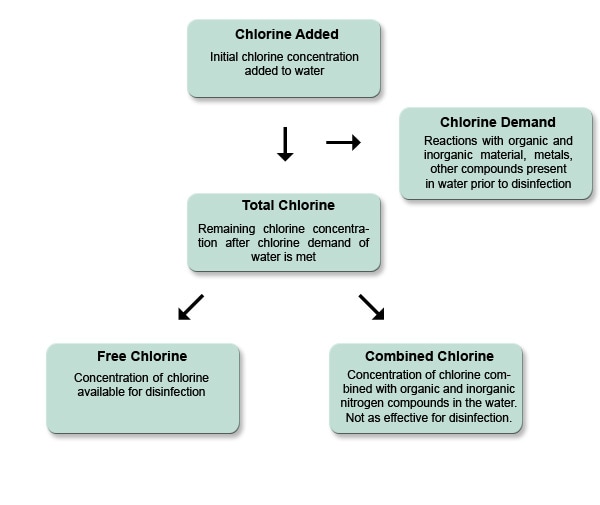
. Combined Chlorine CC Levels should ideally be zero. Chloramines including monochloramine NH2Cl dichloramine NHCl2 and nitrogen trichloride NCl3 are referred to as Combined Available Chlorine. As a rule you will need to raise free chlorine to 10 times your combined chlorine to hit what is known as break point.
The easiest way to check your chlorine levels. Free chlorine is the most important type of chlorine to monitor because it is responsible for actively sanitizing your pool. If total chlorine and free chlorine are equal it means that the chlorine has not started reacting.
0 ppm for a stabilized pool. You will need to shock your hot tub water. In other words it refers to chlorine that is not yet used up to kill organic matters in your pool.
For a healthy pool the free chlorine level should be between 10 and 30 parts per million ppm. Therefore it is good to deal with combined chlorine while it is still small. At most the number can be the same meaning no girls.
The total chlorine level is the sum of the free chlorine and combined chlorine levels in the pool. 45 Votes If your total chlorine level is high you will use a non-chlorine shock. If the total chlorine level is higher than the free chlorine level the difference of the two is the combined chlorine level.
Combined Chlorine CC Levels should never exceed 1. Free chlorine always has a lower value while total chlorine has a higher value. What is the right amount.
When the chloramine level is higher than the free chlorine level subtract free number from total then you need to shock the. When free chlorine reacts with ammonia it produces. The key difference between free chlorine and total chlorine is that the free chlorine is the amount of chlorine that can inactivate pathogenic microorganisms present in the water whereas total chlorine is the sum of combined chlorine and free chlorine.
Why do you want to measure free chlorine as opposed to total chlorine. Between 10 and 30 parts per million. Free chlorine refers to how much active chlorine you have in your pool.
Total Chlorine refers to the sum of free and combined available forms. When adding the DPD reagent a pH of 63 should be observed. May 21 2018 Posted by Madhu.
Free chlorine combined chlorine and total chlorine can be easily understood with the following equation. These are the good parts of chlorine that are active and able to change chemically to sanitize your pool. Ideally less than 02 ppm safe below 05 ppm.
Total Chlorine is the measure of free and combined chlorine therefore the free chlorine cannot be higher than the Total Chlorine. Samples with pH of 76 or above may have 250 ppm alkalinity or above. Methods for determining free combined and total chlorine include.
To keep your hot tub water clean your free chlorine should be higher than your total chlorine. Ideally combine chlorine must be less than 02 parts per million ppm while the free one is between 2 and 4 ppm but not below 01. The chlorine that is still active to remove contaminants is known as free.
Free Chlorine FC Combined Chlorine CC Total Chlorine TC If the free and total chlorine levels are identical that means there isnt a presence of combined chlorine in your swimming pool. Shocking your hot tub water. In order for your pool to be properly sanitized the free chlorine level must remain higher than the combined chlorine level.
The level of combined chlorine must always be lower than the free one. Testing the amount of total chlorine is important to keep the balance of chlorine in the water. If it is low you will use a chlorinated shock.
On the other hand if the free chlorine level is lower than the total chlorine level you can calculate the combined chlorine. The Centers for Disease Prevention and Control recommends pH 7278 for pools and hot tubs. When chlorine binds up with contaminants it forms a compound called chloramines that are still part of the total but no longer effective.
Free chlorine is usually checked by test strips whereas there is a. As long as the chlorine is effectively attacking pollutants the value of the free chlorine will decrease making the total chlorine slightly higher. The value of the free chlorine is always a lower than the value.
Amperometric titration colorimetric DPD titrimetric DPD. For example if your free chlorine FAC levels and total chlorine TC levels are the same then theres no combined or used chlorine in your water and theres no need to add any chemicals today. Combined chlorine levels should not be above 05 parts per million and swimmers are likely to be more comfortable if the level is below 02 parts per million.
InTheSwim recommends 20 to 3. The formula of chlorine is free chlorine combined chlorine total chlorine. In other words none of the chlorine has been utilized yet.
FAC CAC TC. And so it is with chlorine. The only way that test result is valid is if your Combined Chlorine is -81.
The SWS Program methodology leads to free chlorine levels that are significantly lower than the WHO guideline value for free chlorine in drinking water which is 05 mgL value. It is normal for total chlorine to be higher than free chlorine. Is your total chlorine too high.
This is why its so important to test your pool water regularly. Free Chlorine Combined Chlorine Total Chlorine. The interesting fact is the reduced presence of free chlorine than that of total chlorine.
The SWS Program recommends testing free chlorine in homes of SWS users for evaluation of whether or not users are using the system and if they are using it correctly. Should be equal to free chlorine most of the. Its because free chlorine is 25 times more effective at sanitizing pool water than used up combined chlorine is.
Free Chlorine Free chlorine refers to the amount of chlorine that has yet to combine with chlorinated water to effectively sanitize contaminants which means that this chlorine is free to get rid of harmful microorganisms in the water of your swimming pool. Your total chlorine level should be between 2 and 4 ppm. Nevertheless total chlorine shouldnt be higher than free chlorine with a high margin.
If free chlorine measurements are higher than total chlorine using a DPD method check the alkalinity and pH of the sample. Free chlorine is in the form of hypochlorite ions dissolved chlorine gas and hypochlorous acid. Ideal range 20 to 40 ppm safe range 10 to 60 ppm.
In general the free chlorine level should remain between 15 and 25 parts per million. Combined Chlorine CC Levels should not exceed 50 of Free Chlorine FC levels for FC in the range of 0 2 ppm. 435 9257 Views.
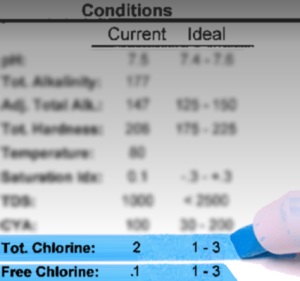
Maintaining Swimming Pool Chlorine
The Difference Between Total And Free Chlorine
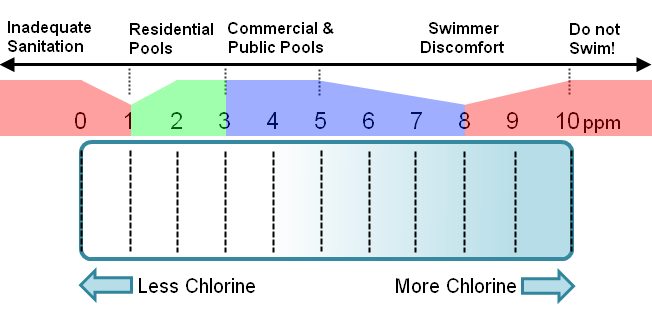
Raising Swimming Pool Chlorine

Chlorine Residual Testing The Safe Water System Cdc

A How To Guide 7 Tips To Lower Chlorine Levels In Your Pool

I Can T Keep A Free Chlorine Level In My Pool Youtube

Difference Between Free Chlorine And Total Chlorine Compare The Difference Between Similar Terms

A How To Guide 7 Tips To Lower Chlorine Levels In Your Pool

Free Chlorine Vs Total Chlorine Forbes Advisor

A How To Guide 7 Tips To Lower Chlorine Levels In Your Pool
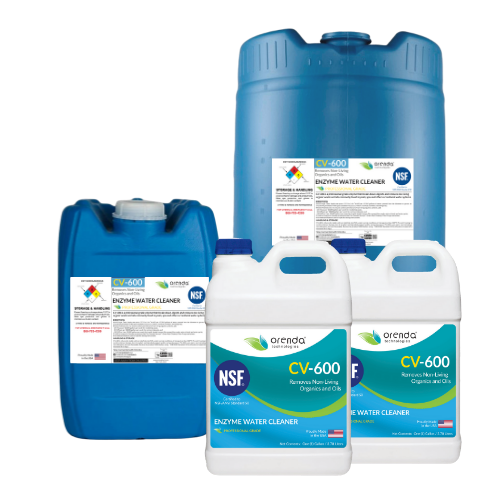
Ways To Reduce Combined Chlorine

Pool Chlorine What S Free Vs Total Chlorine Swim University Youtube

Raise Or Lower Levels Of Pool Chlorine The Pool Factory

Free Vs Combined Vs Total Chlorine What S The Difference Atlas Scientific

Difference Between Free Chlorine And Total Chlorine Compare The Difference Between Similar Terms
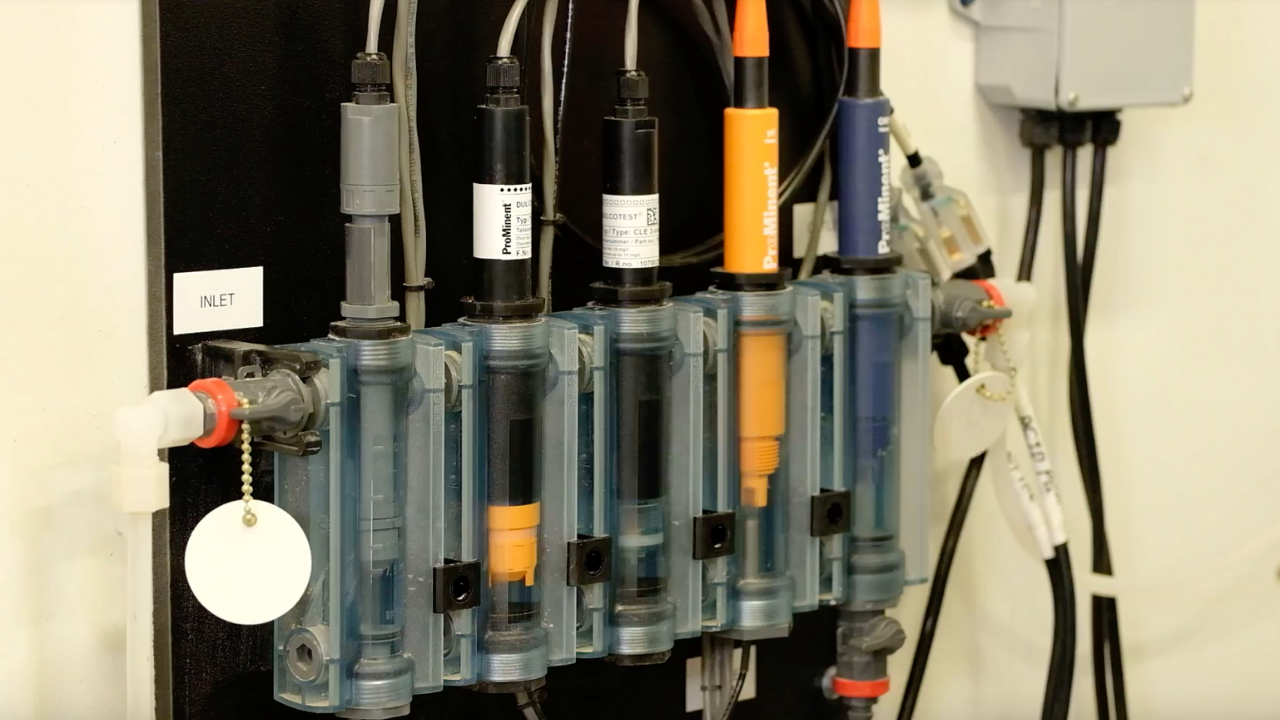
Ways To Reduce Combined Chlorine
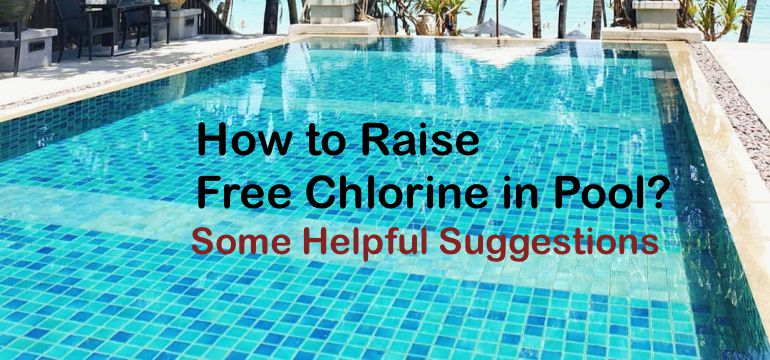
How To Raise Free Chlorine In Pool Some Helpful Suggestions

What Are Free Chlorine Combined Chlorine And Total Chlorine Pool Calculator

Free Vs Combined Vs Total Chlorine What S The Difference Atlas Scientific